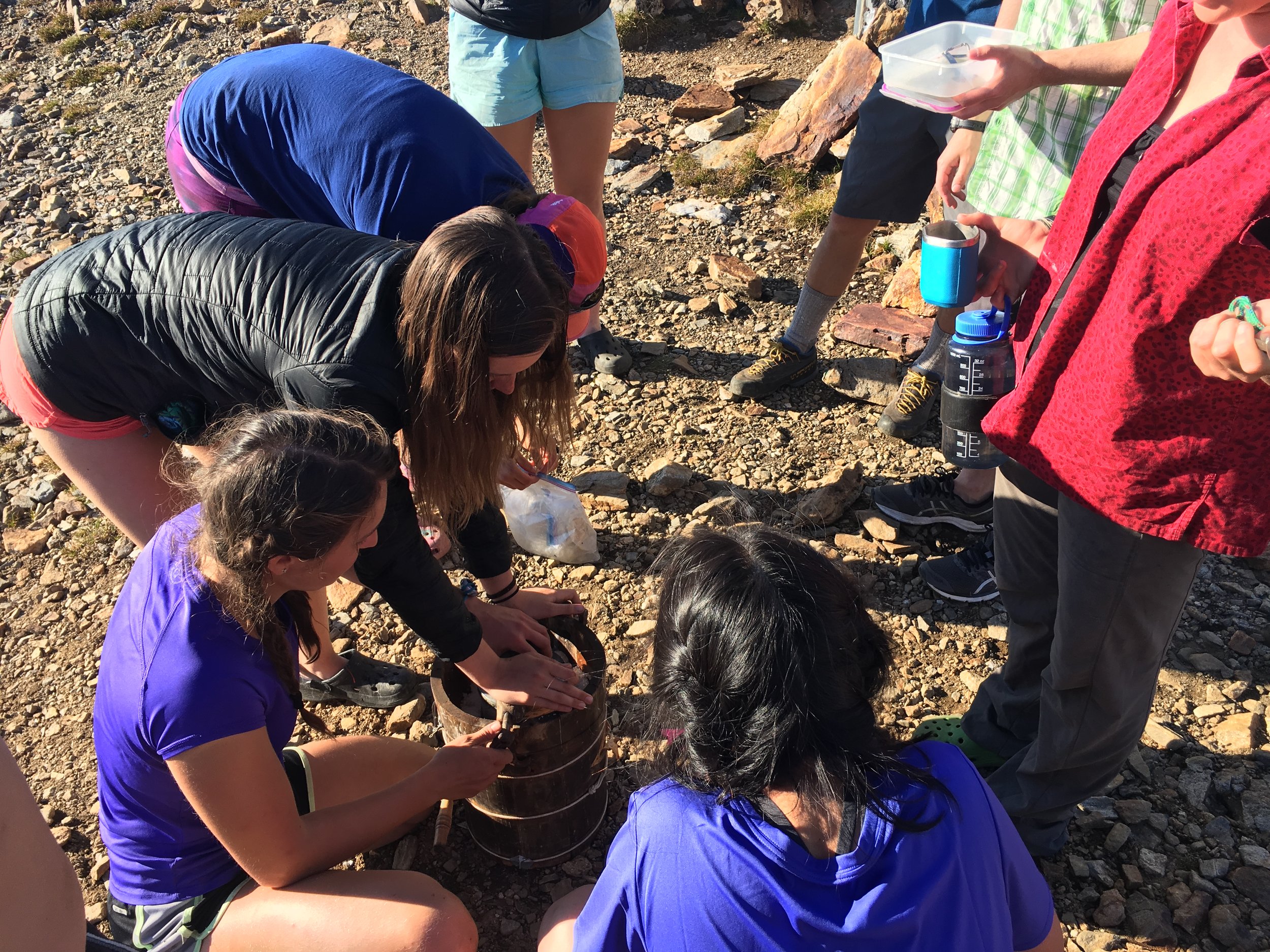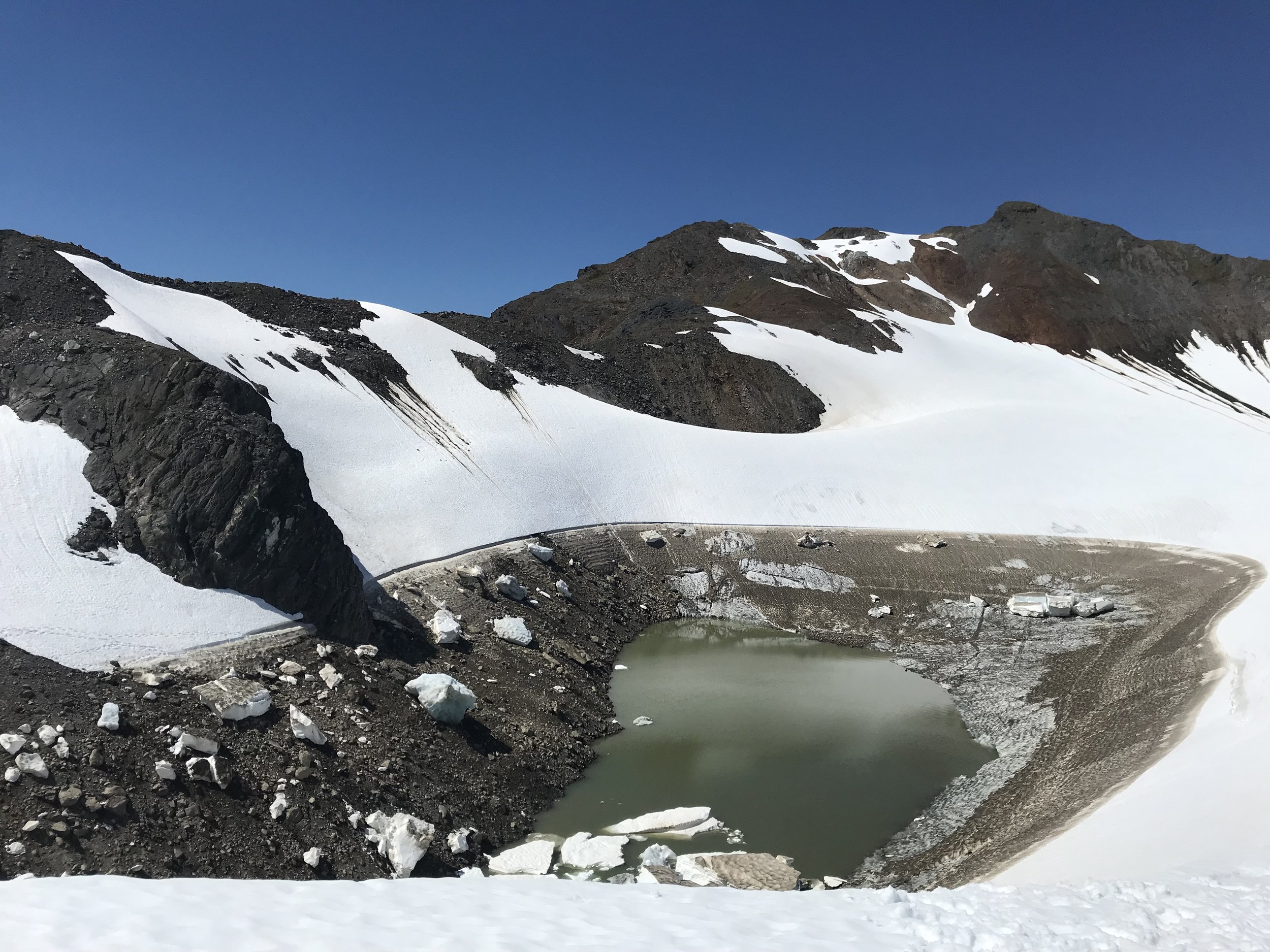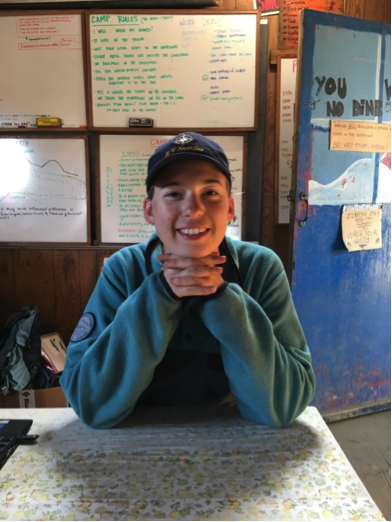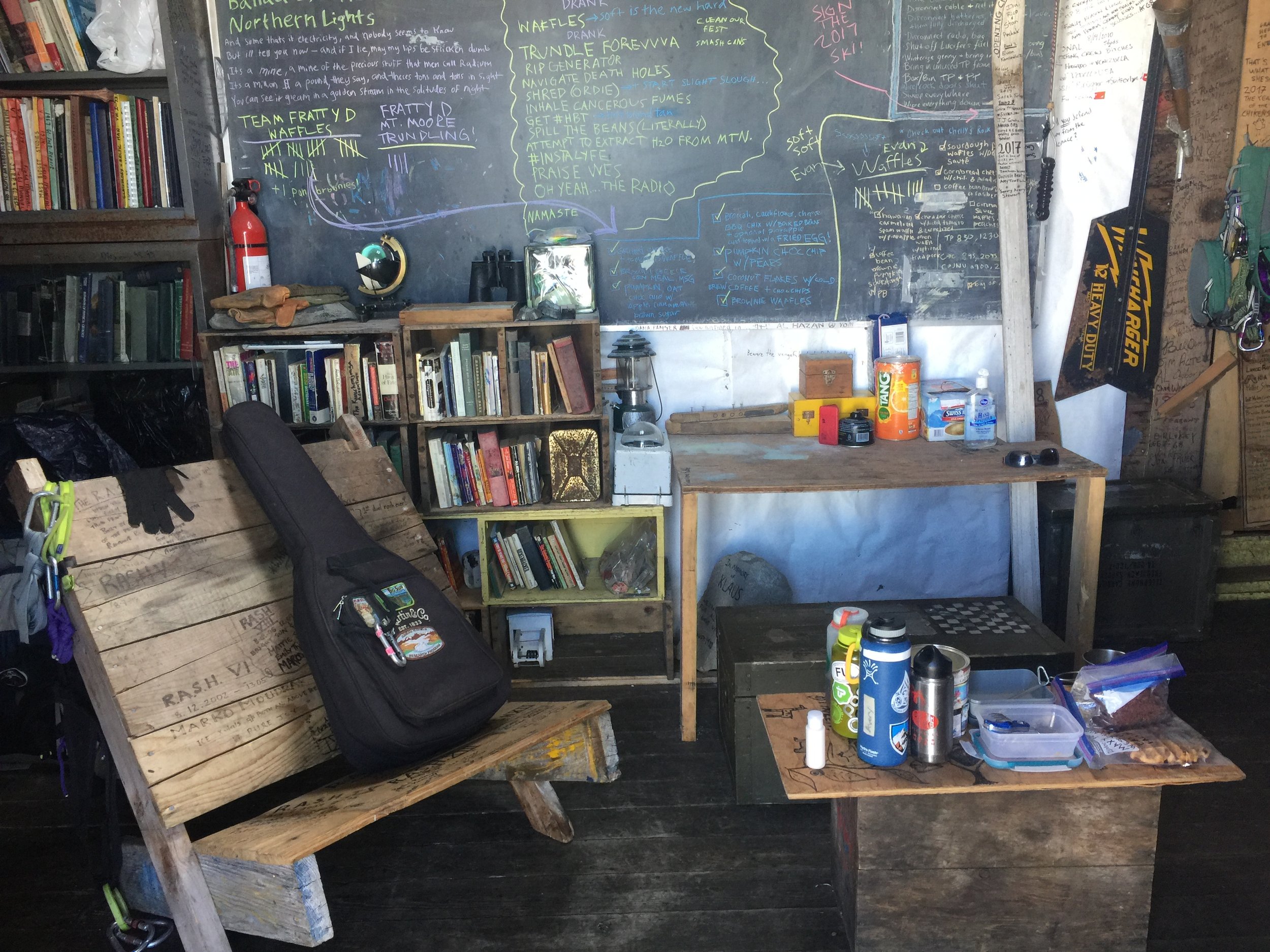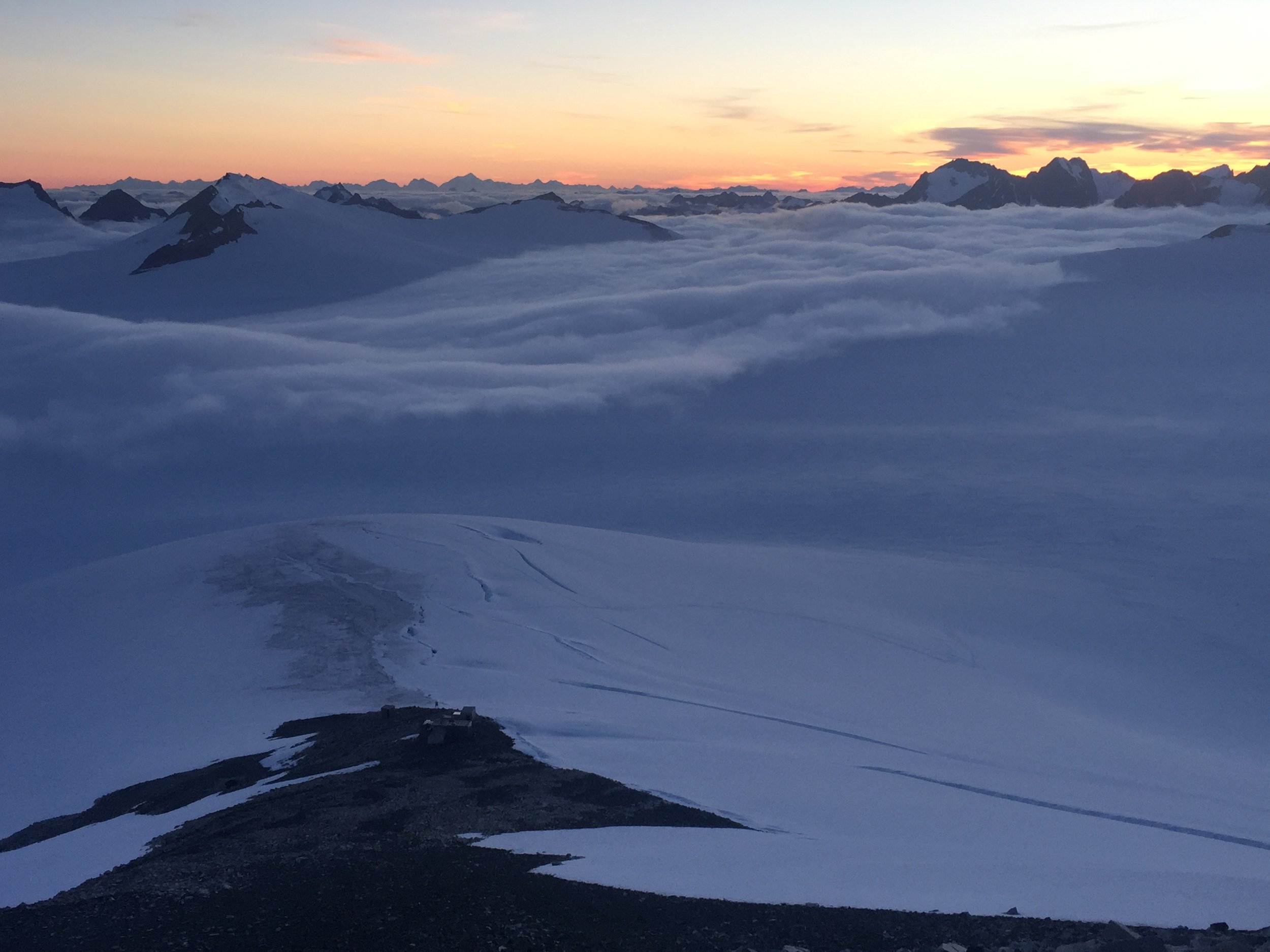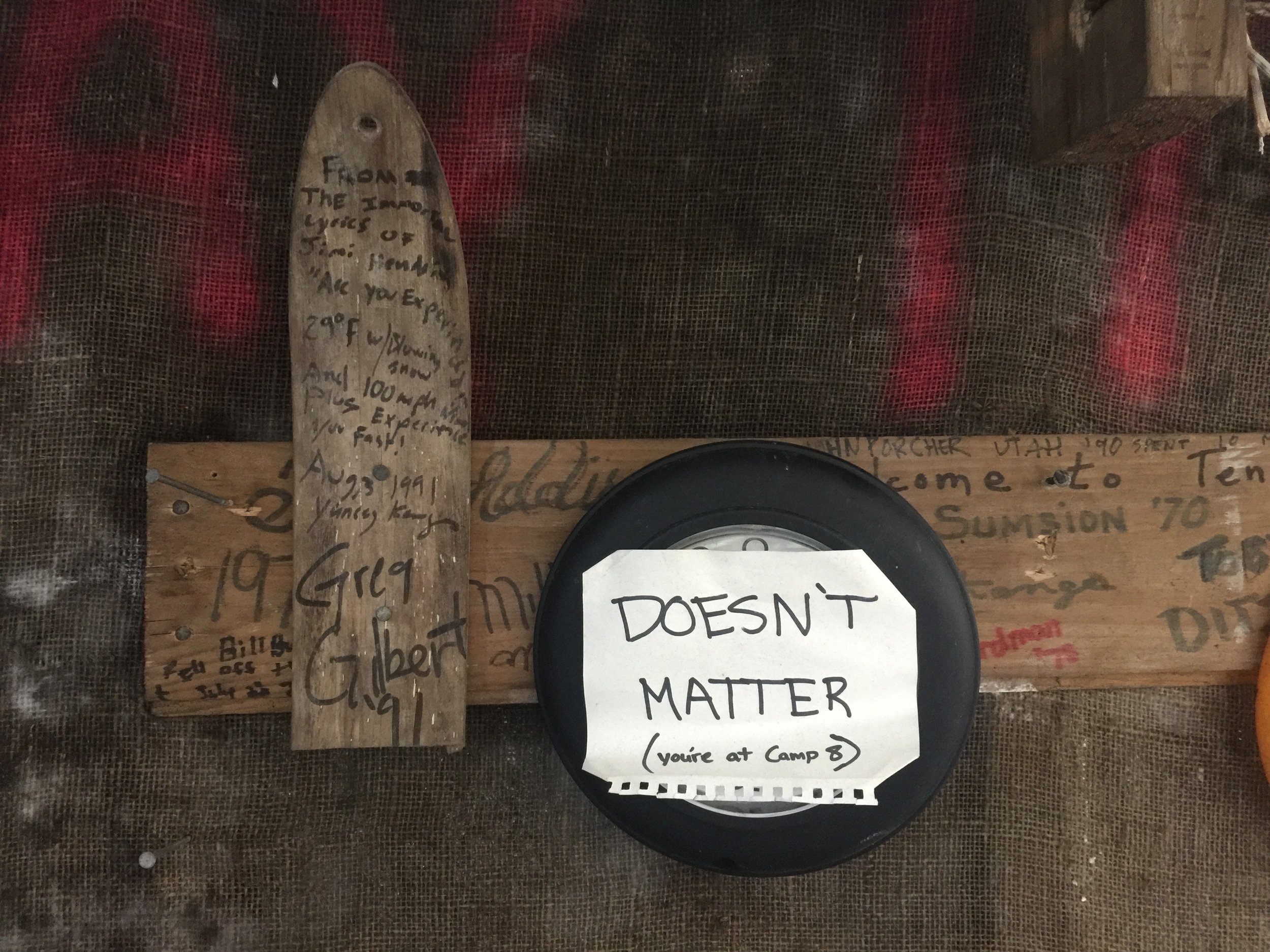By Cullen Muerer (text) and Grace "June" Juneau (drawings)
When JIRPers go out on the glacier, they always bring the "ten essentials." These items are mandatory to have with you every time you leave camp to explore the icefield. By the end of the first week, all JIRP students have the essential items ingrained into their minds.
These items are as followed:
1. Navigation - A map and compass.
2. Sun protection - Glacier glasses, to protect against snow blindness, and sunscreen, preferably with zinc, to prevent against scorching sunburns.
3. Insulation – Extra clothing. Weather changes quickly and what starts as a warm day can quickly turn frigid.
4. Illumination – A headlamp… even though Alaska is the land of the midnight sun.
5. First aid supplies – Blisters are your worst enemy on the icefield and moleskin will save the day.
6. Fire – A lighter.
7. Repair kit – A roll of duct tape can go a long way.
8. Nutrition – Trail lunch with ample amounts of GORP (fancy trail mix) is a must.
9. Hydration – One liter of water is never enough, though you can add snow to make it last.
10. Emergency shelter – A tarp, which can be used as an emergency bivouac shelter.
While we all bring these same items out into the field, everyone tends to have one extra item that they personally would never leave camp without. I asked JIRPers around camp, "What is your eleventh essential?"
Zak Horine (Student): Speaker
While digging mass balance pits, Zak likes to crank up the tunes on his speaker.
Bradley Markle (Climate Scientist, JIRP Alumni & Faculty): Coffee
When he goes out to collect isotope sample, Brad brings an extra thermos of hot coffee for those necessary boosts of energy throughout the day.
Scott Lakeram (Student): Camera
Scott never leaves camp without a camera. He loves to capture the candid moments of days out on the field.
Nadia Grisaru (Student): Too many layers
Nadia runs cold, so she doesn’t leave camp without a few extra layers for those chilly days studying isotopes on the icefield.
Clem Taylor-Roth (Student): Buff
On long ski days to mass balance pits, Clem wears a buff over his neck as extra sun and wind protection.
Marisa Borreggine (Student): Sneakers
“I never hike in my ski boots," said Marisa. She brings a pair of sneakers with her every time she leaves camp to avoid the pains of walking down a steep hill in stiff telemark boots.
Eric Zhu (Student): Friends to laugh with
Although you’re never leave camp alone, Eric likes to bring friends to laugh with.
Alec Getraer (Student): Cards
Alec brings a pack of cards with him out on the icefield, because he enjoys playing and you never know when you might have time to kill.
Isabelle Henzmann (Student): Puffy skirt
Isabelle brings a puffy skirt with her to stay warm and look good out on the ice.
Andrew Opila (Student): Chapstick
When Andrew goes out for a ten hour day on the glacier, he always had a stick of chapstick with him to protect against burnt lips.
Grace "June" Juneau (Student): Sketch book
As the student artist in residence, June carries a small sketch book for scribbled notes and quick contour drawings.














